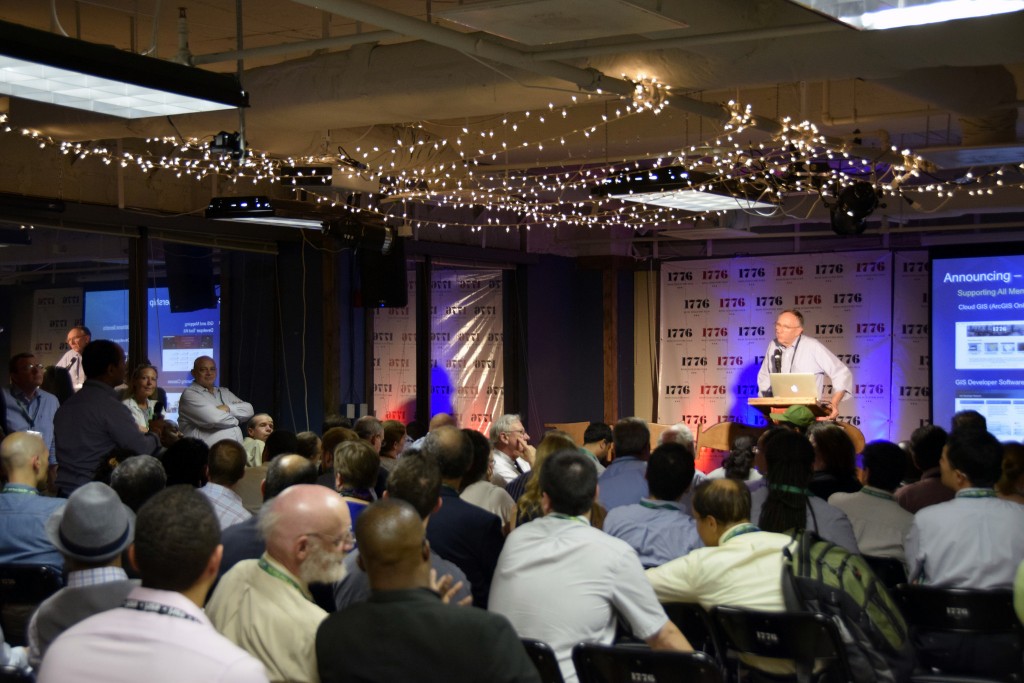At GovLoop’s recent Esri meetup, we had the privilege of listening to Jack Dangermond, Esri founder, give a presentation and conduct a question and answer session. Dangermond shared his vision for GIS going forward, and how critical it is for government agencies to learn how to connect geography into their workflows and decision-making process.
“My own personal philosophy is that geography, the science of world, is more important than ever, because it provides not just the content about the world, but also the contextual setting, and helps us understand,” said Dangermond in his opening remarks.
As GIS has shifted more towards a web-services model, it’s increasingly becoming an integrative technology. Leveraging the cloud, organizations can share GIS data, and are building easy to create and understand web maps. With mobility, agencies can connect users in the field to GIS data to help improve the collection of data. For emergency response professionals, they can have access to information about where fires are, and know where at risk communities are for floods. The applications of connecting the proper content to context seem infinite.
“GIS technology integrates things, it’s the digital age of geographic science, and it is changing how people see the world. It’s getting embedded into almost everything from consumer technology about navigation to climate change,” said Dangermond. The future of GIS is all about continuing the current trends as an integrative technology. GIS solutions can serve as an overlay, to help make sense of the volumes of data that are being created from the Internet of Things phenomenon.
Using GIS, organizations can look at data from a variety of sources, and spot patterns, trends and insights that previously would remain buried in data. Understanding data today means not just having a firm understanding of one spread sheet or file, but the confluence of multiple data sources, and understanding how they all impact decisions. Once this is understood and the data is properly managed, organizations can make better decisions, and hopefully tackle some of societies most pressing challenges.
“So creating this better future is something we all care about, and the world seems like its on fire. Don’t you worry about it? Frankly, we’re all in it,” said Dangermond. He then challenged geo-technologist to think about different ways they can lead, and help their organizations embrace new innovative approaches and applications.
Speaking at 1776, a start-up incubator in DC, Dangermond also shared some observations about his career. Esri, although now a billion-dollar company, supporting thousands of organizations, was once a start up.
“I’ve had a wonderful career, which started as a start up as we mentioned, largely its been a good life because I’ve been able to do what I want to do, and very few people get that opportunity, to get a vision and just go for it. So many of you in this room are in that space, you get the idea, you worked hard to materialize the idea, sometimes you fall, you get back and keep trying. I want to start by acknowledging you all for doing that, because it’s difficult. You’re the last one to leave the parking lot at night. I just think how many nights has my car in the parking lot been the last one, I think that says it for me symbolically what it takes to actually create a business from nothing,” he said.
This year, GovLoop and Esri have partnered to create a variety of different resources. Here are a few for you to check out:
- Open Data & GIS: Better Understanding Our World
- Creating a Stronger Democracy: GIS on Capitol Hill
- ArcGIS as a Platform
